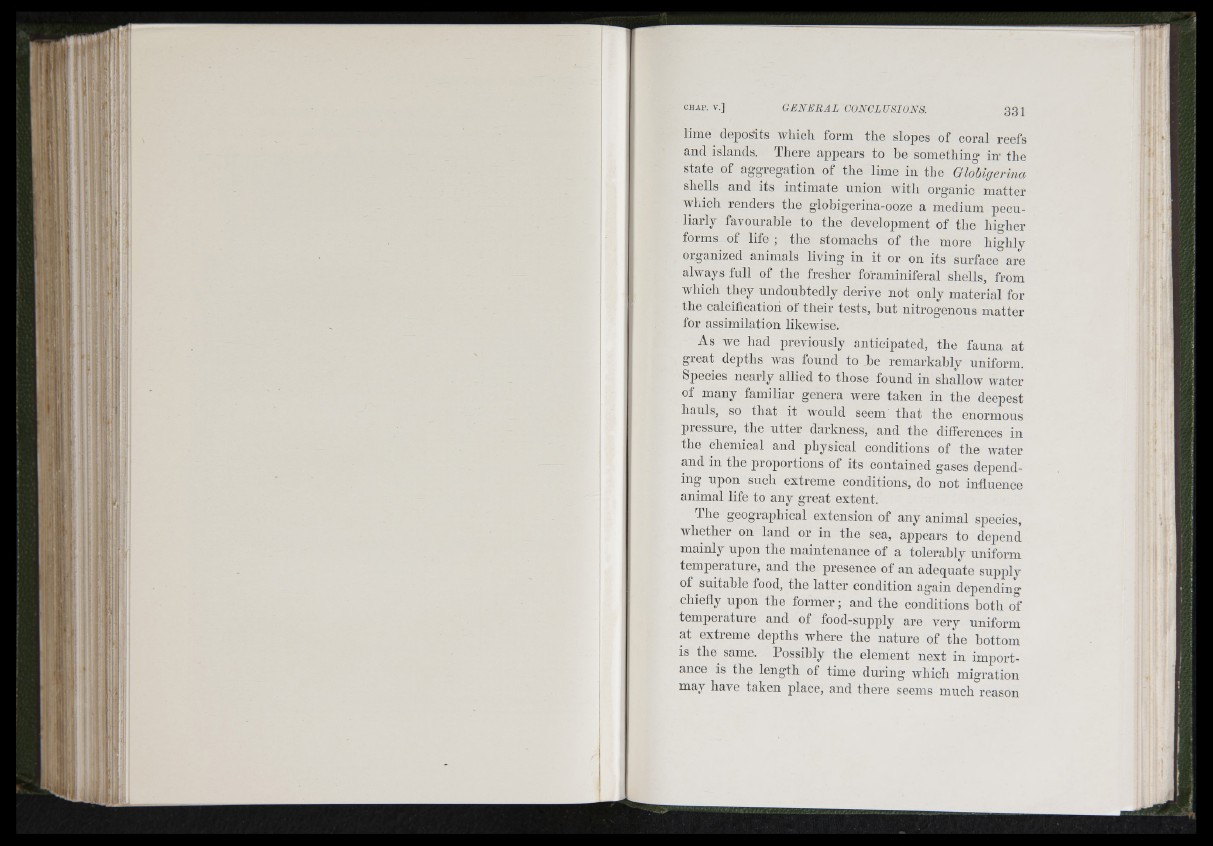
íwKDítrl.:f«í
G E N E R A L CONCLUSIONS.
lime deposits whicli form the slopes of coral reefs
and islands. There appears to be something in the
state of aggregation of the lime in tbe Globigerina
shells and its intimate union Avitb organic matter
wbicli renders tbe globigerina-ooze a medium peculiarly
favourable to the development of tbe bigber
forms of life ; tbe stomachs of the more highly
organized animals living in it or on its surface” are
ahvays full of the fresher foraminifera! shells, from
which tbey undoubtedly derive not only material for
the calcification of tbeir tests, but nitrogenous matter
for assimilation likeivise.
As we had previously anticipated, the fauna at
great depths was found to be remarkably uniform.
Species nearly allied to tbose found in sliaHow water
of many familiar genera were taken in tbe deepest
hauls, so that it would seem tbat tbe enormous
pressure, tbe utter darkness, and tbe differences in
the chemical and physical conditions of tlie water
and in the proportions of its contained gases depending
npon sucb extreme conditions, do not influence
animal life to any great extent.
Tbe geographical extension of any animal species,
whether on land or in tbe sea, appears to depend
mainly upon tbe maintenance of a tolerably uniform
temperature, and the presence of an adequate supply
of suitable food, tbe latter condition again dejiending
chiefly upon tbe former; and tbe conditions both of
temperature and of food-supply are verv uniform
at extreme depths where tlie nature of the bottom
is tbe same. Possibly tbe element next in importance
is tbe length of time during which migration
may have taken place, and tbere seems mucb reason